World 🢖 Asia 🢖 India 🢖 Tamil Nadu
Ancient cities and towns 🢔 Settlements 🢔 Architectural wonders 🢔 Categories of wonders
Wonder
Mahabalipuram
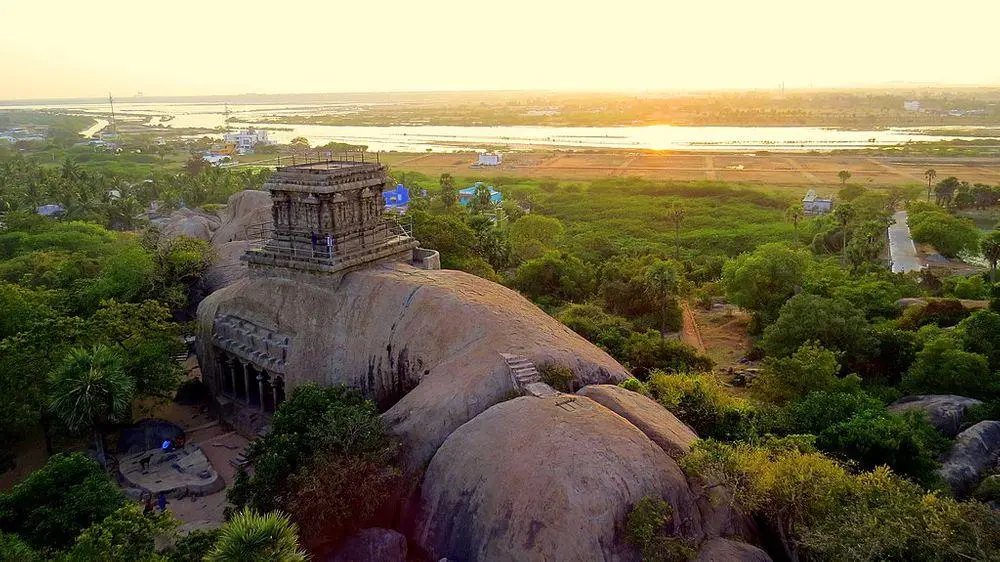
 In short
In short
This seems like a fairy tale – but this is a reality. Mahabalipuram exists – a legendary, ages-old city packed with seemingly improbable, ornate structures. Part of the city with its beautiful structures has been submerged in the sea, but part is still there, a testimony of the great past of South India.
 62.2%
62.2%
GPS coordinates
Location, address
Name in Tamil language
Alternate names
Founded
Period of flourishing
Area
UNESCO World Heritage status
Map of the site
If you see this after your page is loaded completely, leafletJS files are missing.
 In detail
In detail
History of Mahabalipuram
Early history
Nobody knows for sure when people established a port in Mahabalipuram. And no one knows how did they call this city. But already some 2000 years ago it was inhabited and was an international trade port. Many authors have mentioned a large and important port in this area under different names, e.g. Ptolemy (2nd century AD) mentioned a large port in this area named Melange.
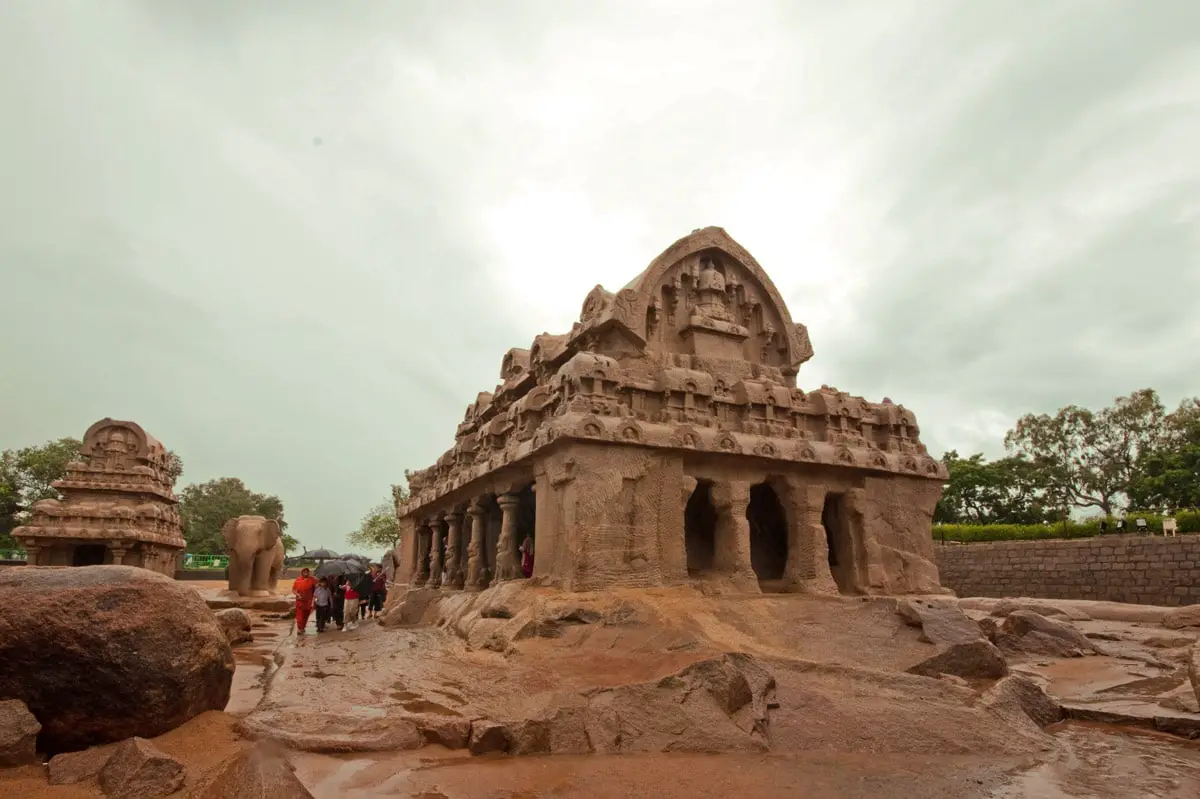
Pallava kingdom
The famous structures of Mahabalipuram were created in the times of the Pallava kingdom (275 – 897 AD). The rulers of this dynasty had ancestors from South East Asia and promoted international trade between the fast-developing kingdoms of South East Asia in present-day India, Indonesia, Thailand, Cambodia, and Vietnam.
Pallava kingdom was an influential, wealthy state where literacy, art, and architecture developed. Many cultures and many states have shaped the immense cultural heritage of present-day India, but the Pallava kingdom is one of the most important.
The capital city of Pallavas was the majestic Kanchipuram but the main port was Mahabalipuram which is located some 60 – 70 kilometers from Kanchipuram.
According to ancient authors, numerous ships arrived in Mahabalipuram, each of them filled with valuable cargo – heaps of gemstones, lots of gold, and other valuables. Many Pallava traders lived in other countries and many foreigners lived in Mahabalipuram.
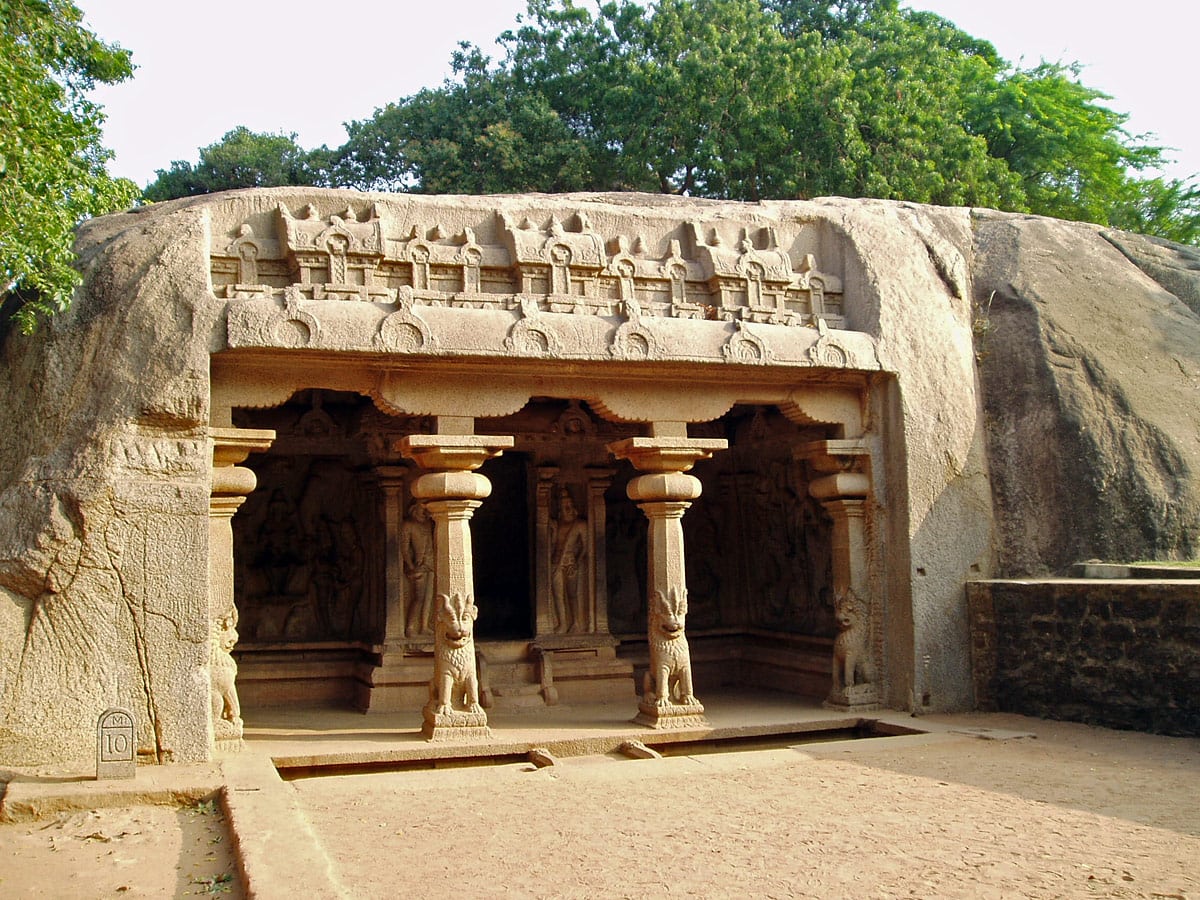
Much of the wealth was invested in the exquisite architecture of Mahabalipuram: one after another in Mahabalipuram appeared sophisticated temples and other structures. Up to this day, there have been preserved some 400 monuments of art, history, and architecture, some of them of world importance to the arts and history.
Rock-cut architecture in the times of Mahendravarman I and Narasimhavarman I
The most prominent times in the history of Mahabalipuram were the reign of Mahendravarman I (600 – 630 AD) and his son Narasimhavarman I (630 – 668 AD). Both kings loved arts and architecture and both of them facilitated the development of Mahabalipuram as a city of unseen beauty and impressiveness.
It is hard to date the construction time of rock-cut architecture and specialists are arguing which structure was built at which time. It is known that in the times of Mahendravarman I were started the first rock-cut temples and the unique rathas (in Tamil – “chariots”) – temples which resemble the sacred chariots and were made from live rock.
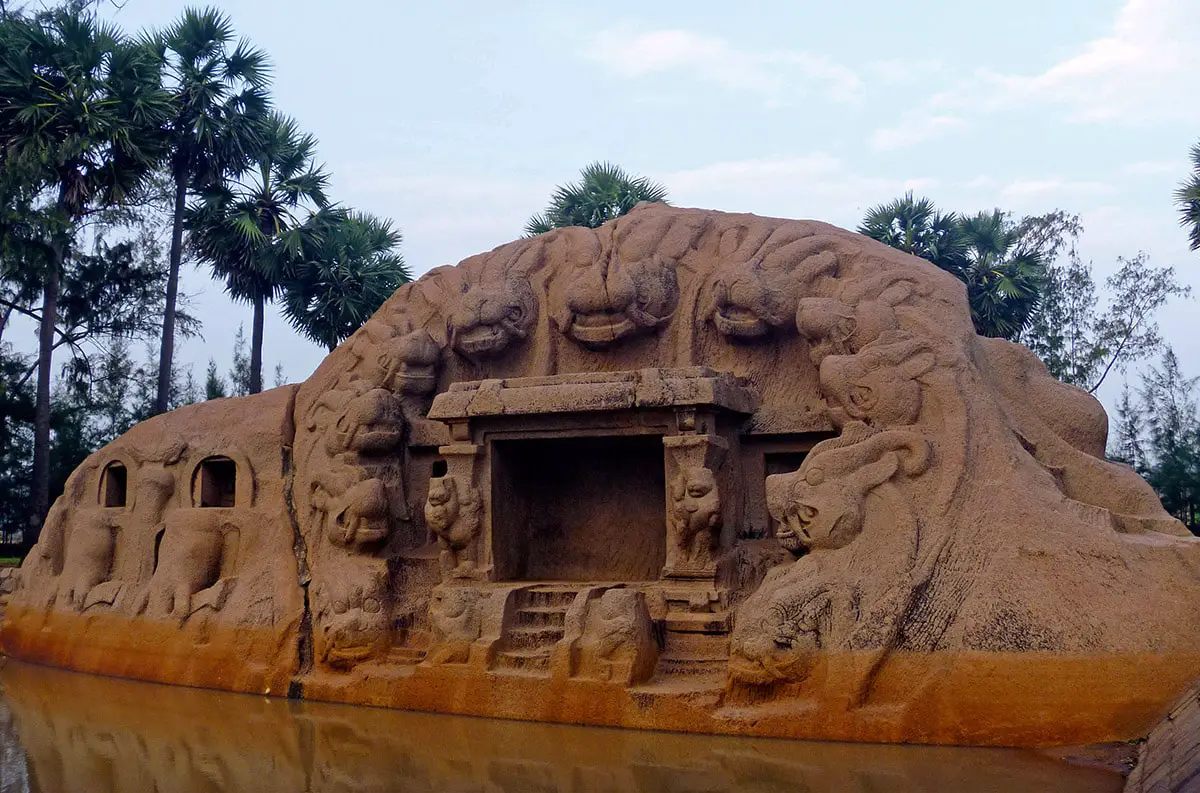
Narasimhavarman I continued the work of his father and, most likely, in his time were made most of the rock-cut temples, rathas, and rock reliefs in Mahabalipuram were made. This king got the nickname Mamalla (“Great Wrestler”) and some consider that this gave the more ancient name of the city – Mamallapuram. Other researchers consider that the name of the city had another meaning: “mallai” in the Tamil language means “prosperity”.
Of course, the rock-cut structures were built in places where a live stone was available on the site – there is a large hill of monolithic granite in Mahabalipuram with cave temples on its slopes. Live granite in Mahabalipuram is also under the soil – in some places artisans created sculpted structures in artificial recesses.
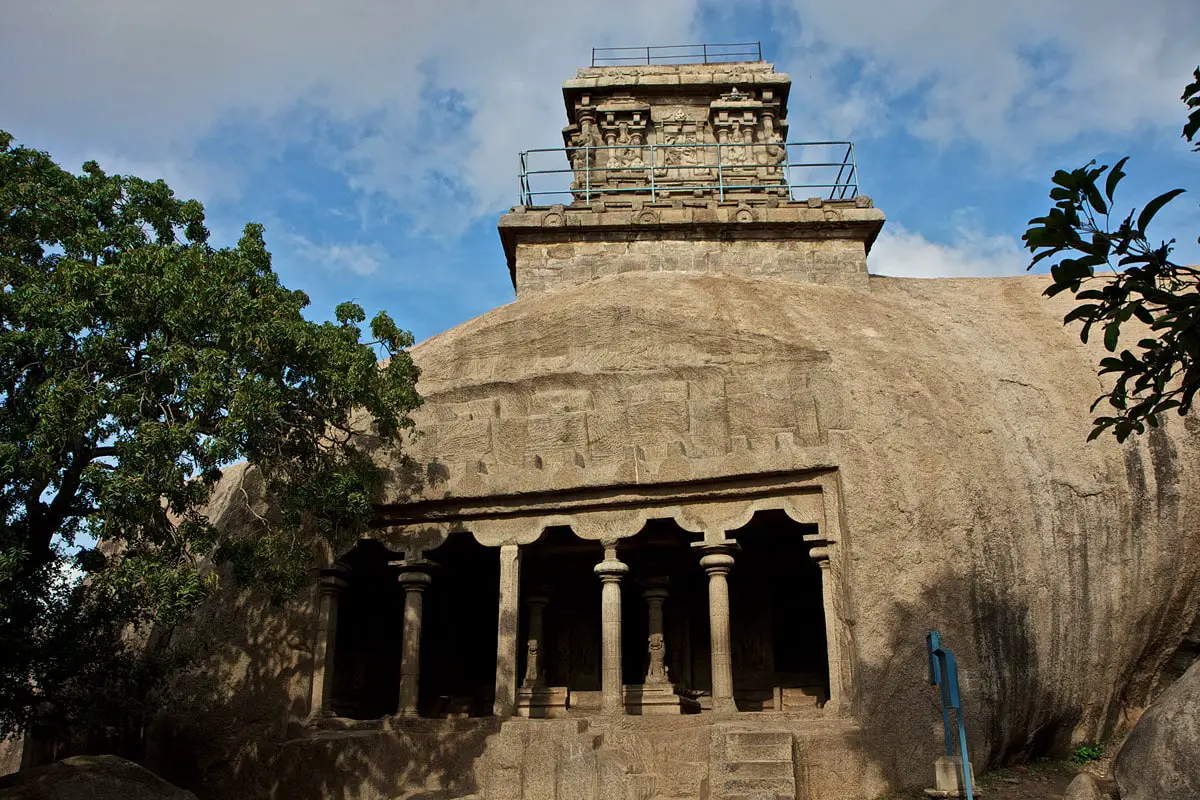
Mistakes were not allowed: work was done in a live rock which in the case of an unexpected notch could not be replaced with another block. They mastered many techniques, some are well known up to this day but some for sure are long forgotten. This was hard, loud, dusty, and sophisticated work – but we may rest assured that these temples will survive for many thousands of years to come.
Nevertheless, such an approach limited the possibilities of architecture: for example, there was no possibility to build tall structures.
Structural architecture in the times of Narasimhavarman II
Around 690 AD the approach to the construction of temples changed in the Pallava kingdom. Architects and artists of these times overcame the limitations of rock-cut architecture. They used another method, which is much more common and understandable to us: construction from large pieces of stone which were placed on each other.
The reign of Narasimhavarman II (700 – 729 AD) was the time when Mahabalipuram changed thanks to this new architecture.
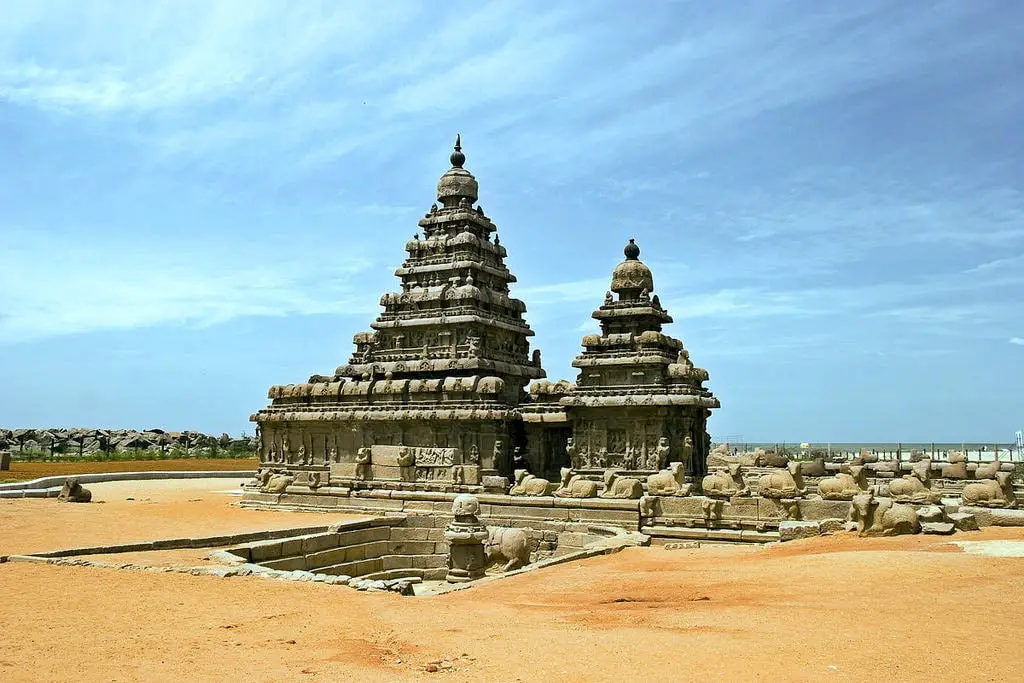
Most likely the first structural temple from the dressed stone was Shore Temple but there were built Olakkannesvara Temple and other temples, including the mysterious lost “pagodas”.
Now the sea traders were greeted by tall, beautiful towers of the Hindu temples. Mahabalipuram had a famous skyline which has been mentioned by travelers from many countries. The city got one more nickname – “Seven Pagodas”.
Disaster
There is surprisingly little known about this major disaster – but somehow, around the 13th century part of Mahabalipuram was submerged under the sea. Under the Bay of Bengal now are remnants of several temples – all other “pagodas” except for the Shore Temple which stands up to this day.
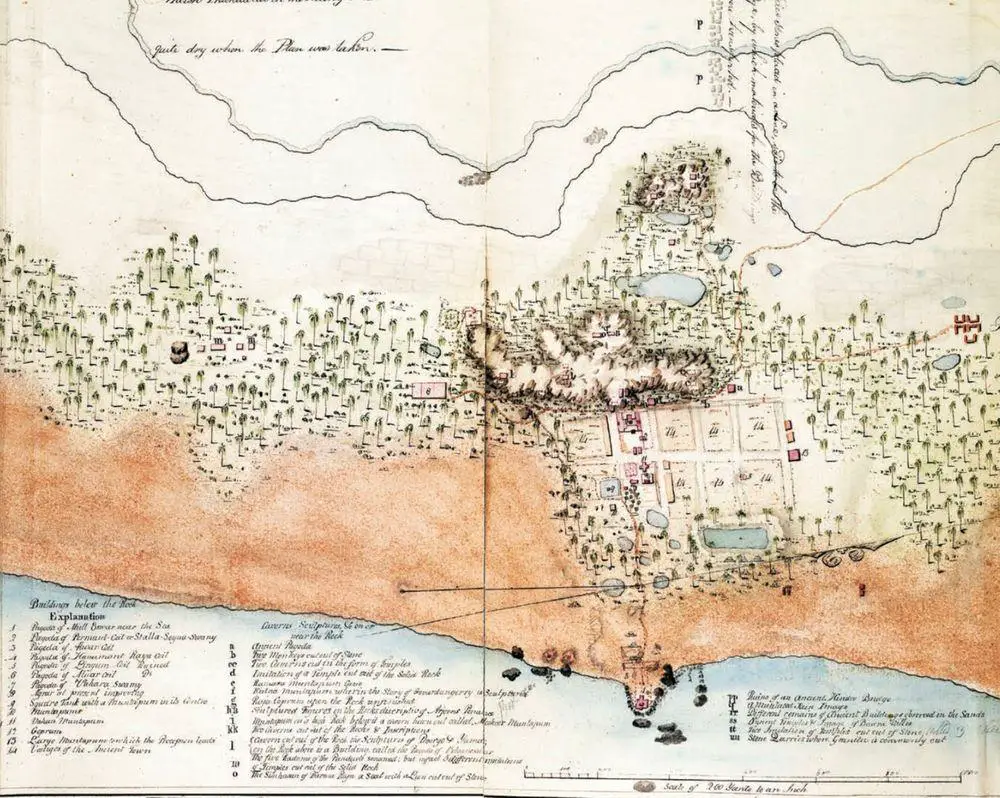
It is not quite clear what happened. The most likely explanation is an earthquake that caused the subsidence of the ground. Frequently is mentioned also a possibility of tsunami: but if the ground has not subsided, tsunami waves recede. This was not the case in Mahabalipuram: remnants of the “lost” temples are some distance from the shore. Also, coastal erosion, most likely, can not be blamed because this would disintegrate the structural temples.
For centuries people thought that the story of submerged Mahabalipuram is just a legend. There was needed another disaster to discover these events. The disastrous tsunami in December 2004 opened unknown ancient monuments and further research shows that there are at least five submerged remnants of structures in the sea.
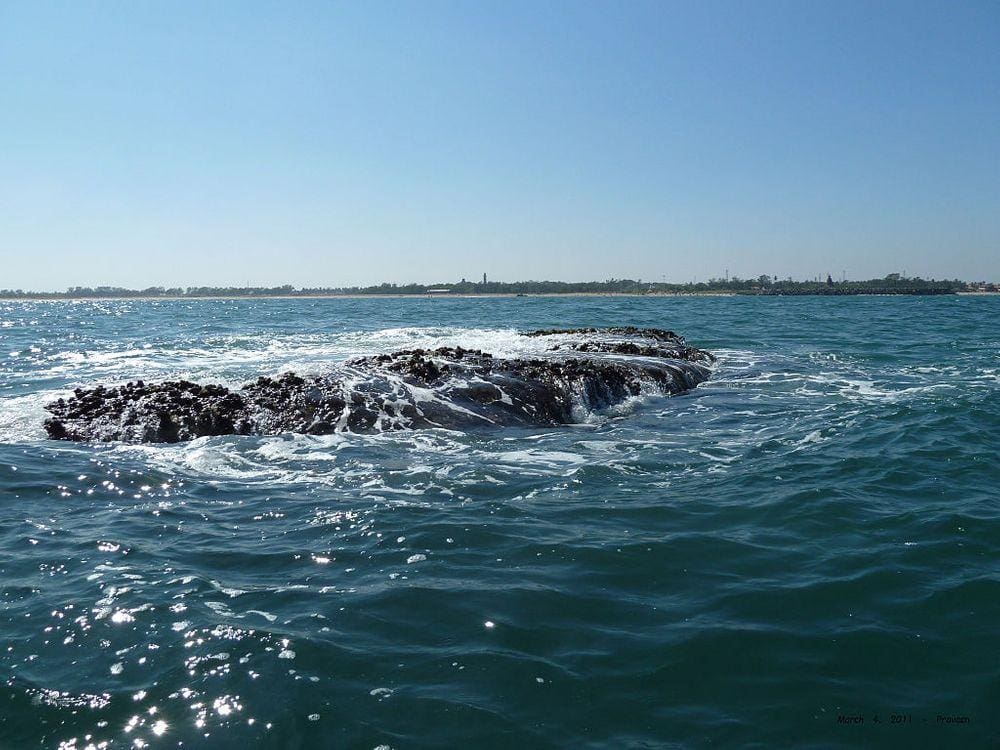
New times
Mahabalipuram is a lively town up to this day. More and more tourists arrive here to see the incredible work of ancient artisans and architects.
The name “Mahabalipuram” was introduced after the 16th century and recently the more ancient name “Mamallapuram” is used more frequently again.
In 1984 Mahabalipuram was declared a UNESCO World Heritage Site. Only in 2003 there were started extensive, planned works to renovate the ancient monuments and adjust the site for mass tourism.
The art of Mahabalipuram left a profound impact on a huge region and for a long time: the later architecture of the great temples in Cambodia, Java, and, of course, South India shows the influence of the art and architecture in Mahabalipuram.
Wonders of Mahabalipuram
Rathas
The most prominent structures here are rathas – large rock-cut temples in the form of chariots. For rathas were used huge blocks of granite and also diorite. These blocks were shaped on-site, starting from above.
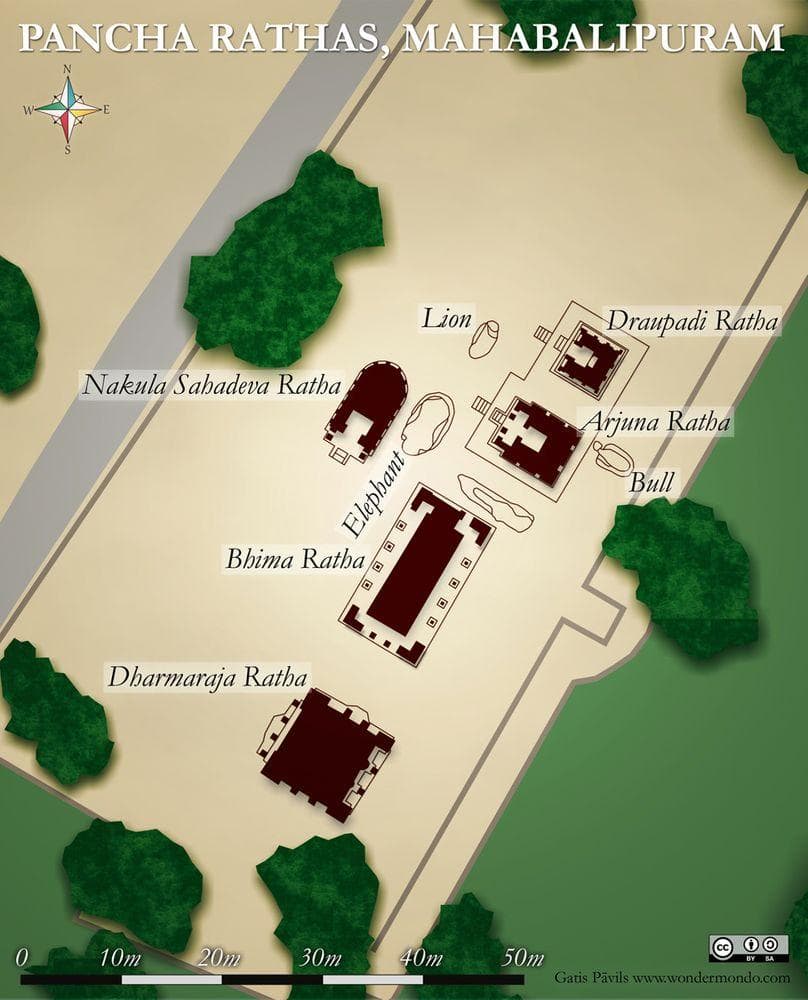
- Ganesha Ratha – located at Varaha Cave Temple. It resembles a wooden temple made in a monolithic stone.
- Pancha Rathas (Five Chariots) – five monolithic temples – processional chariots. Made during the rule of Narasimhavarman I around 630 – 670 AD. The incredibly skilled Indian stonecutters here used a ridge of pink granite and, by removing the "spare" cliff created five structures – rathas – and three large monolithic sculptures among these structures.
- Pidari Rathas. Two unfinished rathas some 500 m west from Descent of the Ganges. Only the upper part of these temple-like structures is shaped. Nevertheless, these are impressive and interesting monuments.
- Valiankuttai Ratha. Unfinished ratha near Pidari Rathas.
Rock-cut temples or mandapas
The art of the construction of rock-cut temples was inherited from the previous major power in this region – the Satavahana dynasty.
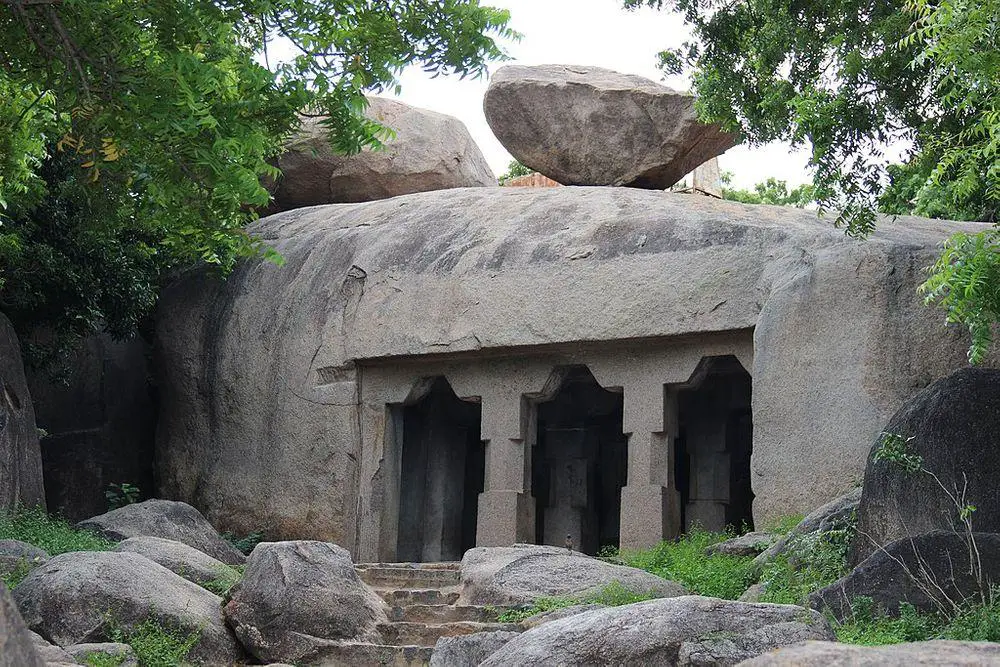
- Adivaraha Cave Temple – this temple is in active use up to this day. There are beautiful stone carvings in it.
- Atiranachanda Mandapam – temple to the north from Mahabalipuram. This rock-cut structure has a very old inscriptions in Devanagari and wonderful rock panels.
- Dharmaraja Mandapa – comparatively simple rock-cut temple which, most likely was built sometimes between 670 and 695 AD.
- Koneri Mandapam – temple of unknown age with interesting details.
- Kotikal Mandapam – simple, early rock-cut temple.
- Krishna Mandapam – the largest finished rock-cut temple in Mahabalipuram with elaborate carvings.
- Mahishasura Mardini Cave – unfinished temple with some of the most elaborate stone panels in the history of ancient Indian art.
- Panchapandava Mandapam – the largest rock-cut temple in Mahabalipuram, unfinished. This had to be the most ambitious of all rock-cut temples in the city.
- Pulipudar Mandapam – unfinished cave temple near the Konerippallam tank.
- Ramanuja Mandapam – this rock-cut temple was built sometimes between 640 and 674 AD and during the times of Vijayanagara Empire defaced and transformed by Vaishnavas.
- Trimurti Mandapam – beautiful, unfinished rock-cut temple, dedicated to Brahma, Shiva and Vishnu.
- Varaha Cave Temple – small rock-cut temple, made in the middle of the 7th century.
- Yali Mandapam – Tiger Cave, located to the north from the centre of Mahabalipuram. A very unusual monument with a group of 11 yali – lion-like mythical creatures guarding a shallow recess. Around this temple have been shaped other figures and structures. Made in the late 7th century AD.
Structural temples
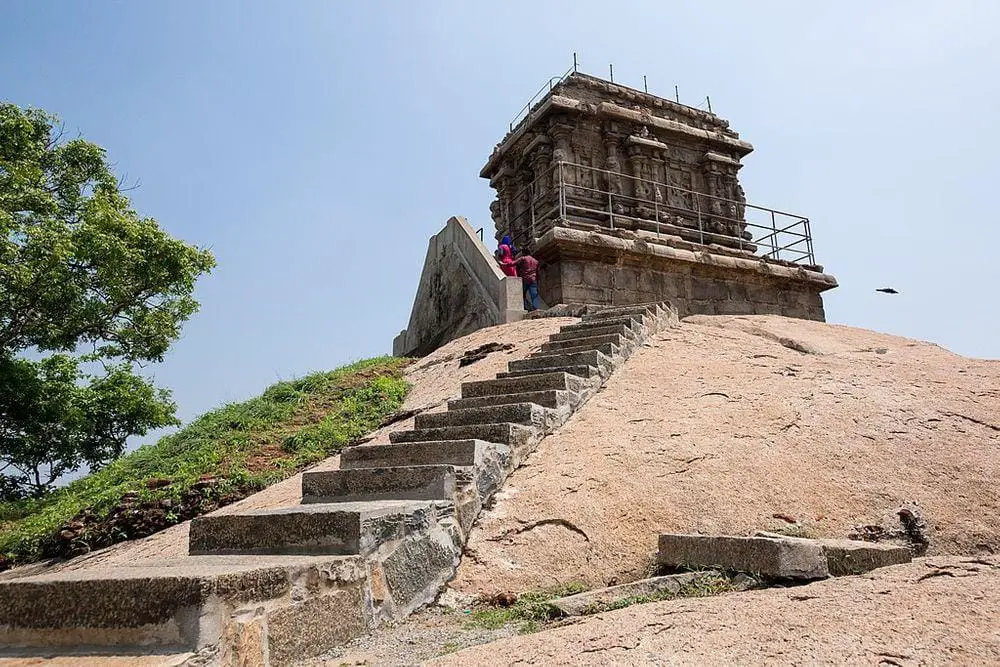
- Dolotsva Mandapa.
- Mukunda Nayanar Temple (Mukundanayanar Temple) – a small temple which was buried under a deep layer of sand.
- Olakkannesvara Temple – structural temple on the summit of granite hill, built in the early 8th century AD. Many consider that this is one of the oldest extant lighthouses in the world, operating since the 8th century – but it is little likely. Lighthouse was placed here in 1887-1900.
- Rayar Gopuram – magnificent, unfinished temple. This could be the most ambitious project in Mahabalipuram.
- Shore Temple – picturesque structure next to the sea. One of the first structural stone structures, the only remaining of the legendary Seven Pagodas. One of the oldest structural temples in South India, a sample of true Dravidian architecture. It consists of three shrines which are placed close together, on one platform.
- The lost “pagodas” of Mahabalipuram (six or five of the Seven Pagodas) – remnants of submerged pagodas under the sea at Mahabalipuram. The disastrous tsunami in December 2004 opened hitherto unknown ancient monuments and further research shows that there are at least five submerged remnants of structures in the sea.
- Thirukadalmallai (Sthalasayana Perumal Temple) – legendary, ornate temple which has existed here since the 7th century.
Rock reliefs
- Descent of the Ganges (Arjuna’s Penance) – giant, 29 by 13 m large open-air relief. It shows the descent of the River Ganges from heaven to Earth.
- “Model” of Arjuna’s Penance – unfinished but elaborate open-air relief at Dharmaraja Mandapam.
- Elephant, monkey and peacock – fine rock carving with these animals.
- Ganesha carving at Karukathamman Temple.
Other monuments
- Draupadi’s Bath – large rock-cut basin on the top of Mamallapuram hill.
- Gopi’s Churn – large, circular cistern at Trimurti Mandapam. Amazing achievement of the ancient engineering.
- Krishna’s Butterball – amazing, giant granite boulder which stands on a steep cliff, seemingly defying gravity.
- The Seven Pidaris – seven stone figures on a platform.
References
- Sanjeev Sanyal, The Ocean of Churn: How the Indian Ocean Shaped Human History, 2017. ISBN 9780143429081.
- J. W. Coombes. The Seven Pagodas. Asian Educational Services, 1999. ISBN: 8120614240.
- Swati Das. Tsunami unveils ‘seven pagodas’. The Times of India, February 25, 2005. Accessed on February 4, 2019.
- Bijay Kumar Das. Temple Architecture in India. Lulu.com, 2018. ISBN: 1387486772.
- Sundaresh and A.S. Gaur. Marine Archaeological Investigations on Tamil Nadu Coast,
India: An Overview. Accessed on March 13, 2019. - William Chambers, J. Goldingham, Benjamin Guy Babington, G.W.Mohan, John Braddock, W.Taylor, Walter Elliot, Charles Cubbins. The Seven Pagodas on the Coromandel Coast. Asian Educational Services, New Delhi, 1984. (first published in 1869)
 Linked articles
Linked articles

Wonders of India
India is the seventh-largest country in the world by area, and, naturally, such a large area contains a huge amount of exciting attractions…
Wondermondo considers that India is the second richest center of architectural heritage in the world after Europe and maybe no single country in the world can match it in this respect.
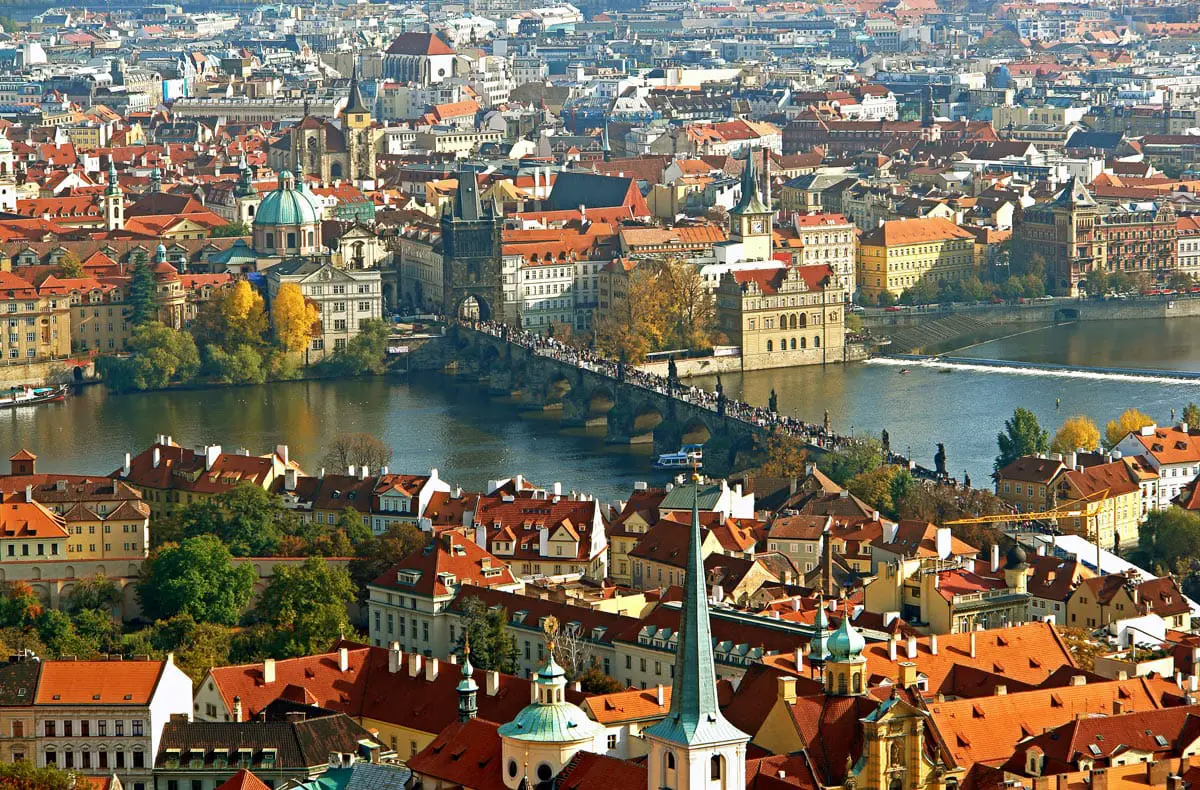
Cities and towns
Many of the most popular and exciting landmarks in the world are cities and towns. Millions of tourists are attracted to such cities as Venice, Florence, Prague, and Jerusalem. They never fail to impress and one will always find something new and unexpected here.

Ancient cities and towns
It turns out that urban planning is a very old profession. The urban fabric of ancient settlements – their structure and evolution gives a lot of food for thoughts about the nature of humans and civilization.
Wondermondo includes in the category of ancient cities and towns those settlements which have developed as urban areas at least 1500 years ago: around 500 AD.
 Recommended books
Recommended books
Tamil Nadu: The Heart of Dravidian India
The huge temples of Tamil Nadu are justifiably famous. Through history and forty-four original photographs, this book explains how the temples came to be and what their statuary symbolizes. The book also paints a picture of what life was like in the civilizations that built them.
Mahabalipuram (Monumental Legacy)
Constructed in 700 CE by the famous Pallava king Rajasimha, Mahabalipuram is a unique monument where art form combines with religion and legends. Also known as Mamallapuram, it showcases the best of Tamil art and architecture. The beauty of the monument is further enhanced by its location on the shores of the Bay of Bengal, the latter significantly influencing the creations. Part of the prestigious Monumental Legacy series, this book presents a graphic account of the site and its monuments-mandapas (cave temples), rathas (chariots), open-air bas-reliefs, and structural temples.


